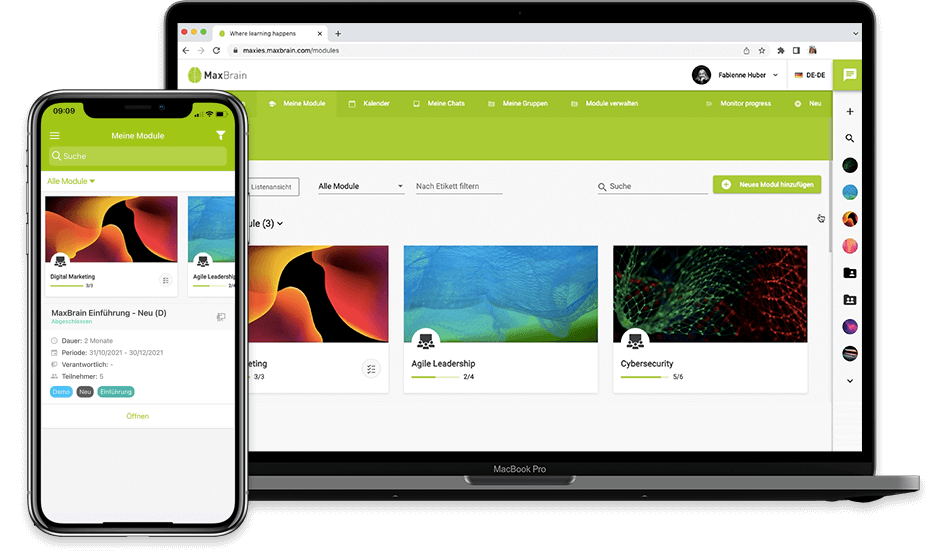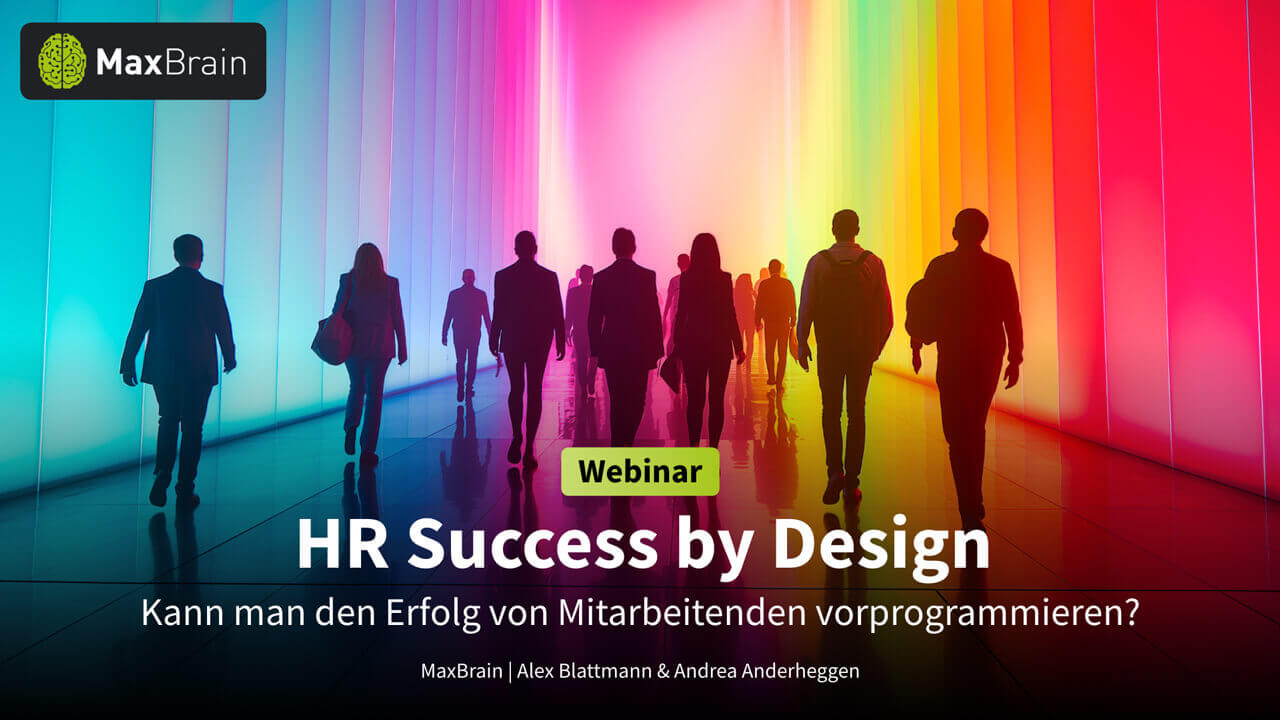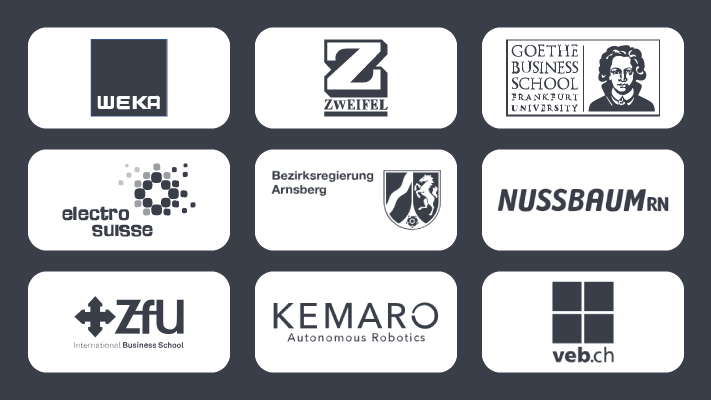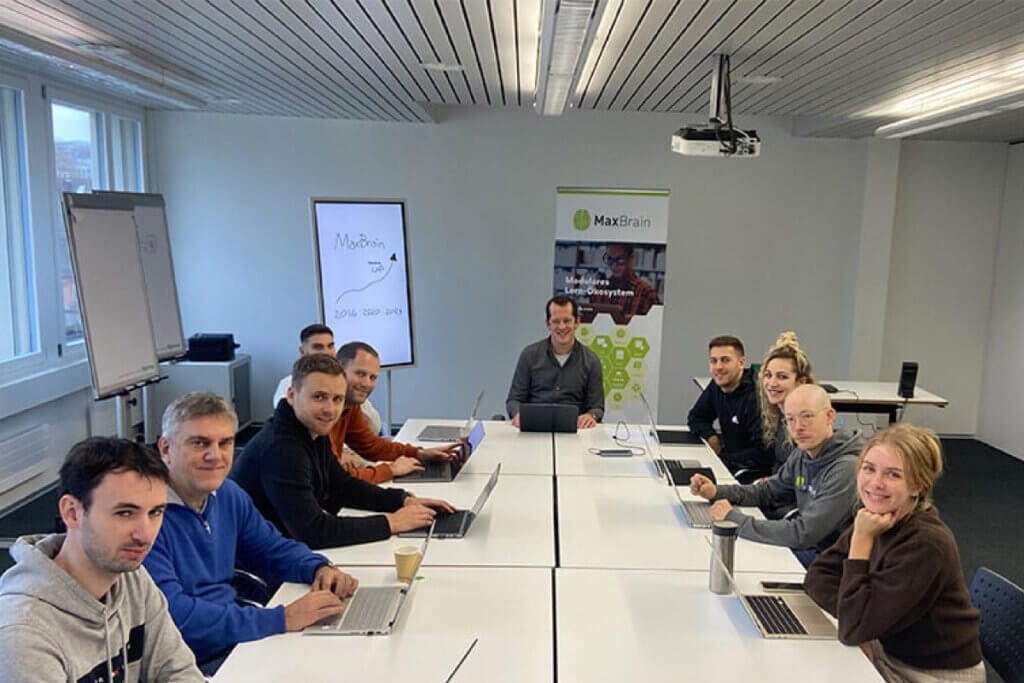Corporate Academy (summary)
A corporate academy is essential to become successful in a market characterized by a shortage of skilled workers, specialization and innovation.
We recommend the following steps for creating a corporate academy:
1. Set the goals of your corporate academy.
2. Involve the most important people early on.
3. develop a curriculum.
4. define the learning formats.
5. choose the right learning platform.
6. enrich your corporate academy with the best additional features.
7. learning content: Create and/or purchase.
8. test your corporate academy thoroughly before launch.
9. Involve managers and approve employees for their "learning time".
10. market the corporate academy as if you were marketing a product.
11. Secure the acceptance and commitment of your corporate academy.
12. Measure and Improve: Improve your corporate academy on a regular basis.
In the following, we will go into these points in detail:
What is a corporate academy and why is it important?
A corporate academy - occasionally also "company academy", "company campus" or, in new German, "corporate academy" - is a structured learning environment that companies use to impart knowledge and skills.
Corporate academies are now used for employees, customers, business partners or even entire industries.
In this article, we address the most common case of the corporate academy for employees.
In an economy increasingly driven by skills shortages, specialization and innovation, corporate academies provide the foundation of a learning culture necessary for sustained business success.
A study conducted by IBM, "The Value of Training," which was conducted among 4,183 C-level executives in 70 countries, impressively proves the importance of employee training:
71% of CEOs see employees as a key factor for sustainable growth - even ahead of products, customer relationships or branding.
For 75-80% of managers, effective training of employees is one of the most important, success-critical factors for the success of projects and the achievement of goals.
84% of employees in the best companies receive the training they need. In contrast, only 16% of employees in the least successful companies receive such training.
Improving a team's competencies by 30% results in a 10-100% higher probability of achieving challenging goals.
Companies that use learning technologies experience 16% higher customer satisfaction and 22% faster rollout of products and processes.
New employees are 42% more likely to stay with a company if they receive adequate training.
With our MaxBrain solution, we specialize in the creation, operation and further development of corporate academies.
Our customers include Zweifel Pomy-Chips AG, the best employer in Switzerland, for whom the Zweifel Campus is a central component in their continuing education.
At MaxBrain, we can consistently confirm the results of the IBM study thanks to such examples.
We go even further:
Corporate academies have the potential to change an organization from the ground up and make it many times more successful in terms of sales, customer satisfaction, employee motivation.
Otherwise, from a business perspective:
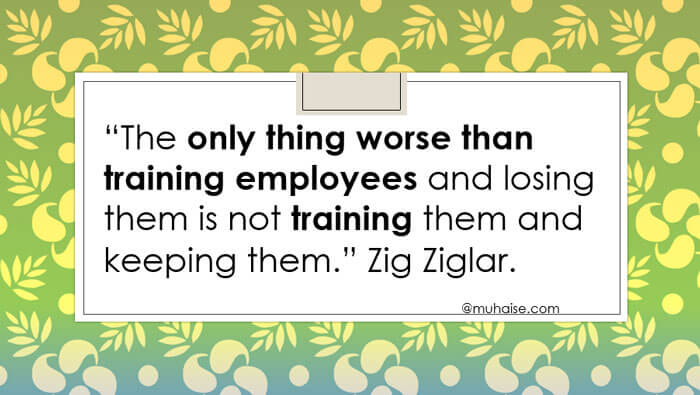
1. Determine the needs and set the goals of your corporate academy.
As in other contexts, we always recommend at the beginning to define as clearly as possible the need of a measure, as well as the objectives quantitatively or at least qualitatively.
The specific questions to ask:
What exactly do you want to achieve with a corporate academy for employees?
Which employees do you want to train? All of them or only certain functions?
Typical goals we encounter at MaxBrain that are critical for corporate academies:
Ensure must-have knowledge: Topics such as occupational safety, data protection, compliance or IT security are now a must in some industries and important in every company.
Optimize the onboarding of new employees so that they become productive as quickly as possible.
Improve Leadership: Train existing and aspiring leaders to realize the full potential of your employees and themselves.
Increase sales performance: Train salespeople to sell faster and more.
Customer Support Training: Train employees who are in contact with customers in such a way that customer satisfaction increases or more sales are generated with existing customers.
Beyond these operationally relatively definable goals, the corporate academy offers another important potential sustainable goal for your organization:
A corporate academy can significantly increase the intrinsic motivation of employees.
According to best-selling author Daniel Pink in the book "Drive: The Surprising Truth About What Motivates Us," three factors determine employee motivation:
- Skills ("Mastery"): Employees want to develop their skills and expertise and feel that they are improving in their work over time.
- Freedom: Employees need a certain degree of control over their work and the feeling that they can make decisions that affect their work.
- Purpose: Employees want to feel that their work has meaning and contributes to a larger goal or vision.
According to Pink, these factors lead to greater job satisfaction, more engagement and, ultimately, better performance.
A corporate academy can help to positively influence these factors for the motivation ("drive") of employees:
2. Involve the most important people early on.
Our experience clearly shows:
Corporate academies that are conceived quietly by one or a few people with no connection to the outside world are more likely to fail than those that involve key people from the beginning.
Who are the most important people?
The most important people in a modern organization are the employees themselves.
Form focus groups or conduct surveys to align the conceptual aspects of your corporate academy with employee needs early on.
Of course, it is important to mobilize at an early stage those managers who play an important role in the company or who are in any case influential. Often these are members of the management, sometimes people from the extended management and occasionally employees who enjoy a special reputation among colleagues or for whose work employee training is even a prerequisite.
"Key people" are also those who will help you increase adoption and engagement later in the launch of the corporate academy. More on this below.
3. develop a curriculum.
Based on the needs assessment and definition of objectives in Step 1, develop a curriculum that structures the courses, training modules, and other learning content.
The curriculum should follow a clearly evident system:
In this way, you later convey the feeling that the Corporate Academy is well thought-out and goal-oriented. The "red thread" that emerges from the curriculum also helps to internalize the learning content better.
The curriculum structures the learning content without having already worked it out in detail.
There may be some adjustment to the curriculum later when it comes to detailed work on the learning content.
4. define the learning formats.
Determine the delivery methods for your courses and training.
You can choose from a range of options, including online learning, classroom training, on-the-job training, workshops, or coaching.
Exactly which learning formats these are depends very much on your organization, the day-to-day work of your employees, and the complexity of the learning content.
The more complex the learning content, the more support and guidance from a teacher, coach, or mentor is needed.
The more mobile employees are, the more likely online or mobile formats make sense.
5. choose the right learning platform.
Invest in technology that supports the delivery of your training program.
This usually includes a Learning Management System (LMS) or Learning Experience Platform (LXP), which links and centralizes the curriculum and all associated learning.
We have explained in detail what makes a good LMS in the blog article "What makes a good LMS? (for 2023+)".
In summary, a good LMS is characterized by:
- is user-friendly,
- creates identity and adapts to your organization in look&feel,
- offers a comprehensive range of basic functions,
- can be technically integrated with existing technologies and platforms,
- remains adaptable to its own objectives in the short and long term,
- provides regular updates and innovation,
- does not compromise on security and data protection,
- is operated by a service provider who solves your individual problems,
- Assists you in the delivery of learning content,
- enables the collaboration of all participants on the learning platform,
- works perfectly via mobile devices, and
- enables meaningful evaluations that help you optimize your corporate academy.
If you are interested in a modern learning experience platform and would like to get an insight into concrete examples, you are welcome to request a test account from MaxBrain or let us explain to you how a modern learning platform works.
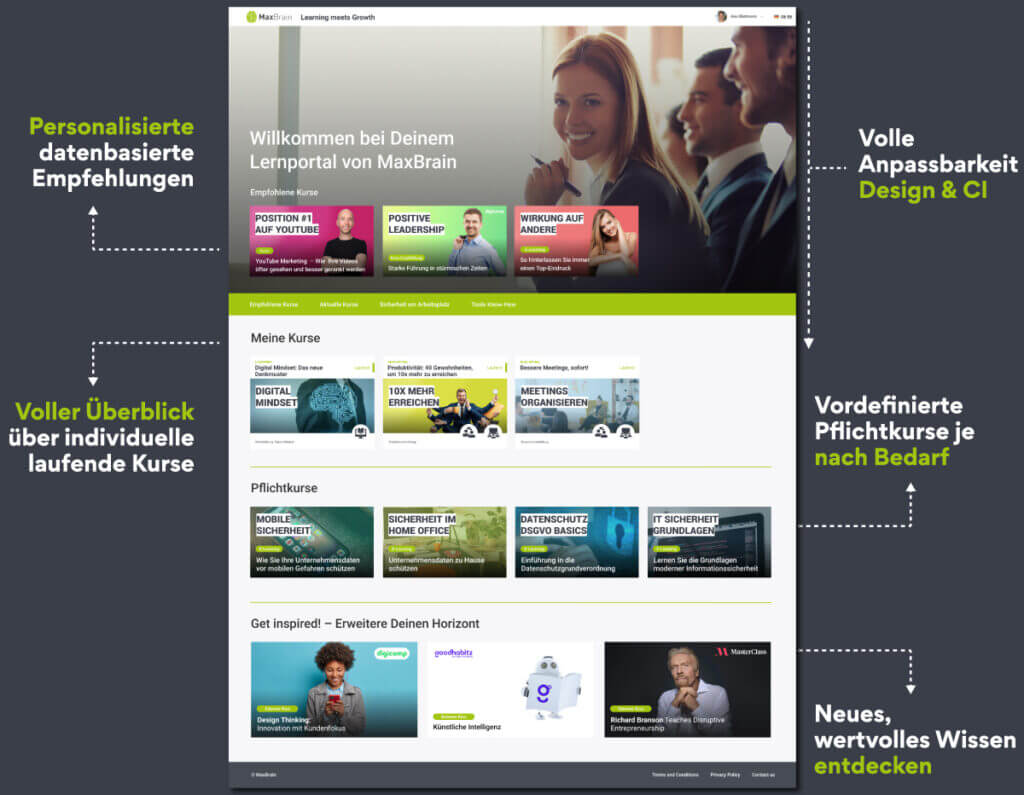
6. enrich your corporate academy with the best additional features.
The Learning Management System is the operating system, the foundation of your corporate academy.
To make the Corporate Academy more interactive, exciting and communicative, we recommend integrating additional tools and technologies into the learning platform.
These include, for example:
Video conferencing or communication tools such as Zoom, Microsoft Teams or Slack,
Collaboration tools like Miro, which allow employees to visually explain learning content to each other.
Feedback tools to regularly solicit feedback on learning content, curriculum, tools, etc.; for example, with providers such as SurveyMonkey or TaskBase.
Providers of universally relevant learning content such as Elucydate or Goodhabitz.
However, make sure you only integrate features that are truly relevant and needed. Keep the enterprise academy simple.
7. create or buy learning content
The next step is to develop engaging and interactive content tailored to your employees' needs.
This topic is very versatile.
We recommend our blog article "Creating learning content for your LMS in the best possible way [Checklist 2023]".
There are several options for delivering learning content:
1. create learning content completely by yourself
The advantage of this is that learning content is more likely to be adapted to the needs of the company's own employees.
The big disadvantage is that creating learning content takes time and requires a certain amount of knowledge in terms of didactics. Especially with larger amounts of learning content, many organizations quickly reach their limits.
2. purchase learning content from external providers:
For pure e-learning, providers such as Goodhabitz or Elucydate are recommended.
For courses and learning content with a teacher, at a course location or in the company itself, professional providers of continuing education such as Goethe Business School, WEKA Academy, digicomp and many more are recommended.
3. have learning content created by agencies and consultancies specializing in this area.
Here, for topics of all kinds, Somedia Learning in Switzerland or the ML Group from Germany are among our preferred partners.
For more strategic topics, such as training on a company's specific values and vision, there are also some companies, such as Jester Advisory, which operates throughout Europe.
4. mixed forms of the above three possibilities.
8. test your corporate academy thoroughly before launch.
Before you publish your company campus, test your first version with a small, representative group of employees.
Today's people are used to IT systems working perfectly and content being of high quality. Even minor losses in quality lead to disproportionate criticism of the entire system or even the idea itself.
Think of the situation when you watch YouTube, Netflix, Disney+ or the like. Imagine that these apps would be difficult and slow to use. Or: The movies and videos offered would not be relevant and boring for you. Would you still use these providers then?
Fact is:
Most people are not impressed by technology, but by high-quality, exciting content and shiny design. For the vast majority of people, technology is only a negative issue when it doesn 't work.
As a project manager, you can be as enamored with the features of your corporate academy or as convinced by your concept: If learning content is irrelevant or the learning platform seems slow and stale, you will never inspire your colleagues.
Therefore, be somewhat perfectionist in the testing phase of your corporate academy so as not to write "paranoid".
Try to put yourself fully in the interests and needs of your employees, whose job is precisely NOT to design and publish a corporate academy, but to do your own job well.
Answer questions around learning content, learning platform, and other feedback, such as:
Learning content: Does your content serve its purpose? Does the learning content lead to the intended learning outcomes? Is the learning content engaging?
Learning platform: Is the learning platform intuitive enough or does it still need too much explanation? Is it integrated with other, relevant systems? How easy is it for employees to access the learning platform? What is the first impression of the learning platform: Very good or boring?
Has a representative group of employees tested the Corporate Academy? Have these employees gone through the entire process from "sign-up" to learning paths to learning target checks?
What feedback did you collect with it? What was rated very good, good, bad or very bad?
Take these questions seriously and improve your corporate academy in as many ways as possible that are relevant to employee success.
In doing so, they significantly increase the chance that the corporate academy will inspire all other employees.
9. Involve managers and ensure employees have their "learning time".
At the latest before the official launch of your corporate academy, we recommend involving your organization "top-down":
Employees should have the opportunity to learn about corporate academies from their supervisors.
People in leadership roles should get behind the corporate academy and help you position it among employees as a valuable, personal offering.
Not only that:
Employees need time to learn in the Corporate Academy.
It's a common mistake to think that employees should and can automatically learn alongside their work.
If you require your employees to take care of continuing education in their free time, you will severely weaken the acceptance of your corporate academy.
Allow employees sufficient time to engage with the learning content and acquire knowledge during working hours as well.
Give your employees a learning time budget.
Think of this time as an investment in productivity and employee satisfaction that will pay for itself many times over in terms of lost normal work time.
To do this, it is essential to inspire those in senior positions to clearly explain the value of the corporate academy to their team, and to get the "commitment" from these leaders to allow their employees sufficient time for continuing education.
10. the big day: launch of the corporate academy
After all these steps, the time has come: you can now publish your great company academy among all employees!
Think of the launch of a corporate academy as an internal marketing effort that draws attention to the new offering through many touchpoints.
Follow the "FBI Principle" in your communications - Features, Benefits, Impact.
In German: Communicate what it is all about, what it brings to the employees and what they can concretely achieve thanks to the Corporate Academy.
The communication channels are varied depending on the organization.
We often see the following options to promote the corporate academy across organizations:
Internal Influencers: Have leaders or other internal influencers communicate the value of the corporate academy to their respective teams.
Email or message: Send general information to all employees in coordination with management.
Intranet and Group Chats: If your organization has an intranet or uses group chats, use them to announce your great new Corporate Academy and regularly to communicate particularly interesting learning content or courses.
Promote your corporate campus through offline touchpoints; for example, in the company cafeteria, elevators, in front of the printer, restrooms, or at the high-traffic coffee machine to establish small "learning culture reminders."
Communicate seasonally relevant topics and learning. For example: Vitality in winter, strategy or agility in the summer break, special topics that are particularly important for the company at the moment.
Consider other ways to most effectively market the corporate academy among employees specifically in your organization.
11. secure the acceptance and commitment of your employees
A corporate academy thrives not only on technology and learning content, but above all on the acceptance and commitment of employees.
To ensure acceptance and engagement, we recommend the following:
Time budget: Give your employees enough time during work to learn and develop.
Many employees today are under pressure and can hardly afford to leave work for 2-3 hours a week to learn something new without permission. It is therefore important to approve a clear time budget for further training.
As already written above:
Consider corporate academy learning time for what it is:
A worthwhile investment in the productivity and motivation of your employees.
Next:
Communicate corporate academy values regularly: Communicate the value and specific learning content of your corporate academy not just at launch, but on a regular basis.
To generate more acceptance and engagement, your goal should be to inspire employees.
Show your employees how they can become rock stars thanks to the Corporate Academy!
Be very specific:
For example, show the support team how the corporate academy can help reduce support tickets.
Explain to your sales team how corporate academy courses help close deals more often and faster.
Other idea:
Establish the corporate academy as a leadership tool .
Integrate feedback and evaluations of learning progress via the corporate academy into regular employee reviews.
Have your employees take a course through your Corporate Academy that is as relevant to their work as possible, and discuss the "learnings" as a team 1-2 weeks later.
There are, of course, many more ideas to increase engagement:
Rewards if possible: Reward employees who are particularly hardworking or learn a lot thanks to the company academy. "Gamification" or an internally visible reward system can significantly improve engagement.
Thank the employees who make the best suggestions for improvement. In this way, the Corporate Academy becomes a project of the employees themselves!
Whenever possible, show the leaders in your organization what the results of the corporate academy are and how it helps the company grow.
12. Measure and Improve: Improve your corporate academy on a regular basis.
Last but not least: Don't just leave the corporate academy to its fate:
Gather feedback systematically.
Evaluate the feedback relentlessly.
Implement the improvement suggestions that have the most impact on the success of the corporate academy.
Offer new, inspiring learning content on a regular basis and promote it to the employees who are most interested.
By following these steps, you will build a corporate academy that will improve the skills and knowledge of your employees, increase the productivity of your organization, and bring you a whole lot closer to achieving your company's goals.
Success inspires. The same goes for your cool corporate campus.
Questions for you:
Now I would like to hear from you:
Does your company already use a corporate academy?
If so, what is particularly important?
Please leave a comment on LinkedIn:
Did you like this article?
If yes, please share this article on your social media channels. Thank you very much!
